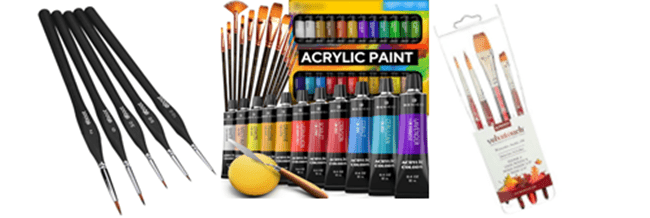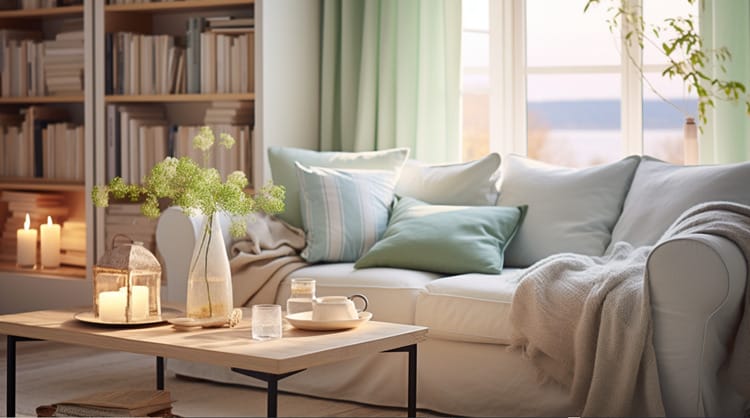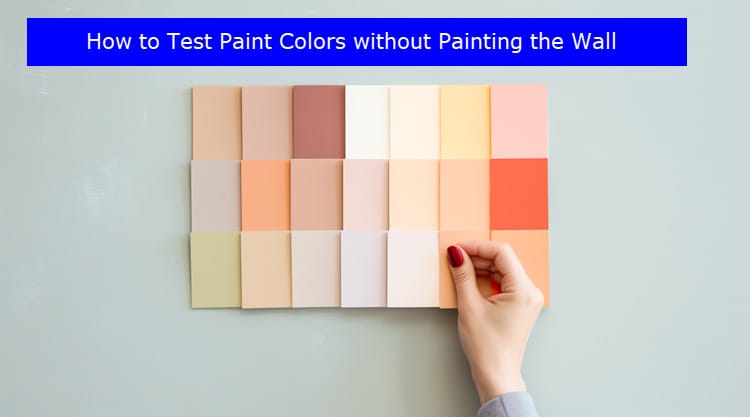
Tired of guessing and wasting paint? Say goodbye to color regrets!
Discover innovative techniques to test paint colors without painting your walls.
From sample boards to digital painting, we've got you covered. Explore the importance of daylight, clean surfaces, and proper placement.
Avoid common mistakes and confidently select the perfect shade for your space.
With our tips, you'll create a beautifully painted room that reflects your style and personality.
Key Takeaways
• Use sample boards or tape color swatches on walls to test paint colors without painting the wall
• Seek expert help from a paint color consultant for professional advice and guidance
• Utilize technology by digitally painting your home to visualize and choose paint colors
• Use a large painted poster board for testing paint colors to accurately observe undertones and compare options.
How to Test New Paint Colors Before Actually Painting Your Home
To test new paint colors before actually painting your home, follow these simple steps:
First, purchase paint swatches from a paint or home improvement store. These small cards contain samples of different paint colors. Hold them up against your walls to get an idea of how the colors will look in your space.
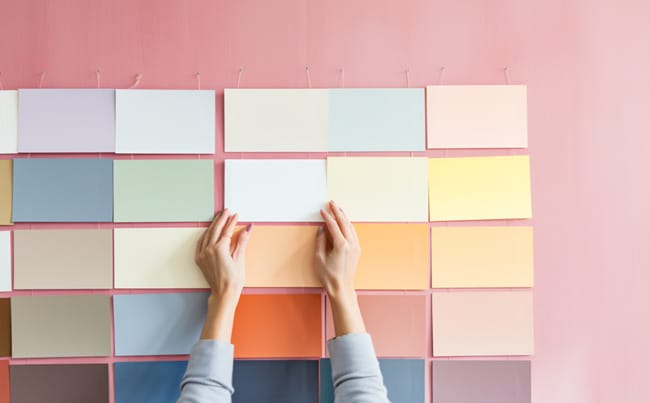
You can also tape the swatches to your walls and observe them in different lighting conditions throughout the day. This will help you determine if the color works well in all types of light.
Choosing and Preparing Paint Samples
When it comes to choosing and preparing paint samples, there are a few key points to keep in mind.
First, consider creating your own paint sample boards or using Samplize Peel & Stick samples for convenience.
Related: Samplize Review
Additionally, using a large painted poster board instead of a small paint swatch can help you accurately see undertones and compare different options.
Create Your Own Paint Sample Boards or Use Samplize
If you want to test paint colors without painting the wall, you can create your own paint sample boards or use Samplize peel and stick samples.
Creating your own paint sample boards is a cost-effective option. Purchase sample boards from a paint or home improvement store, or use scrap boards and paint them with the desired colors.
Allow the paint to dry thoroughly before making a decision. Use the sample boards for portability by moving them around the room and placing them next to window treatments, furniture, and other elements.
Another option is to use Samplize peel and stick samples. These samples are easy to apply and remove, and they provide a convenient and time-saving way to test different paint colors.
Whichever method you choose, using sample paint and paint sample boards will help you make a more informed decision about the right color for your space.
Use a Large Painted Poster Board Instead of a Paint Swatch
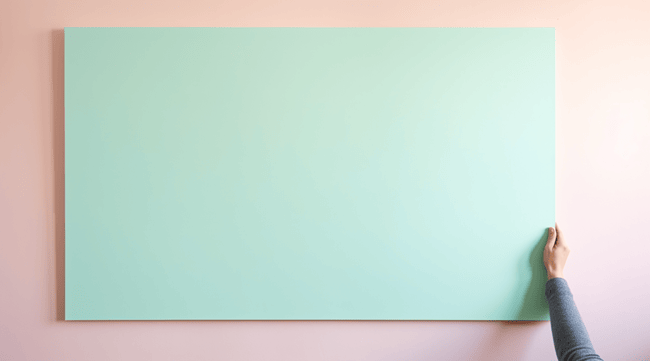
Using a large painted poster board instead of a paint swatch can provide a more accurate representation of paint colors and help you make a better decision for your space.
Here are three reasons why using a large painted poster board is beneficial:
1. Surface Area: Small paint swatches don't show enough surface area to see undertones accurately. By using a large poster board, you can see the color on a larger scale and observe any subtle undertones.
2. Comparing Options: Comparing paint options on a poster board allows you to see the colors side by side and find your favorite. This method provides a better visual representation than simply relying on small swatches.
3. Accuracy: The color swatch may look darker than the painted color board. By painting a large poster board, you can see the true color and avoid any surprises when it comes to applying the paint to your walls.
By using a large painted poster board, you can make a more informed decision about the paint color for your space.
Now let's explore how to use paint testers the right way to find the best shade.
How to Use Paint Testers the Right Way to Find the Best Shade
Paint testers are a great way to test paint colors without painting the wall. They're small cans of paint that you can apply directly to your walls to see how the color will look in your space.
To use them, start by selecting a few different shades that you're interested in. Then, apply the paint testers to a small section of your wall and let them dry completely. This will give you a better idea of how the color will look in your space.
You can also move the paint testers around to different walls and observe them in different lighting conditions to see how they look throughout the day.
Tape Color Swatches to Your Walls
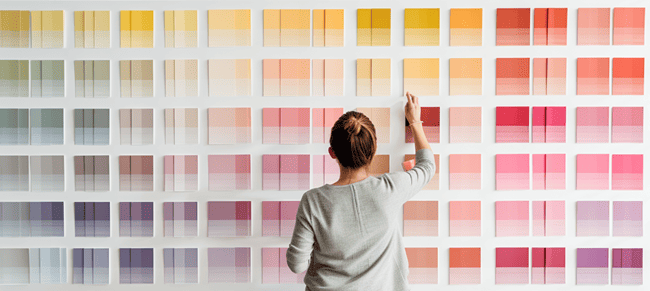
To effectively test paint colors without painting the wall, start by taping color swatches to your walls. This method allows you to see how different paint colors will look in your space without the commitment of actually painting the walls.
Here are three reasons why taping color swatches to your walls is a great way to choose and prepare paint samples:
1. Easy Visualization: By taping color swatches to your walls, you can easily see how the paint colors will interact with the lighting and other elements in your room.
2. Multiple Perspectives: Taping color swatches to every wall allows you to observe how the colors look from different angles and in various lighting conditions throughout the day.
3. Feedback from Others: Keeping the swatches up for several days gives you the opportunity to seek opinions from friends and family before making a final decision on the paint color.
Choose Your Stain, Floor, or Carpet Color First
Before selecting paint samples, it's important to choose your stain, floor, or carpet color first.
The color of your flooring or carpet can greatly impact the overall look and feel of a room. By choosing these elements first, you can ensure that the paint color you select complements them harmoniously.
Once you have chosen your stain, floor, or carpet color, you can then proceed with selecting and preparing your paint samples.
Testing paint colors is crucial to finding the perfect shade for your space. It allows you to see how the colors interact with the fixed elements in your room and how they look in different lighting conditions.
For Saturated or Bright Colors, Test with a Primer
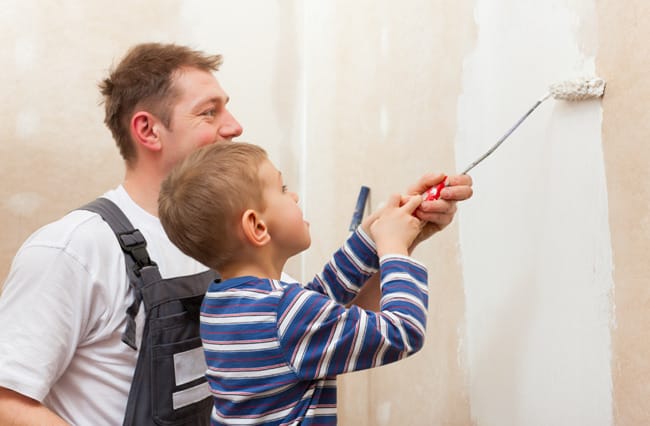
When testing saturated or bright colors, it's important to use a primer to ensure proper saturation and color accuracy.
Here are three reasons why using a primer is beneficial when testing paint colors without painting the wall:
1. Enhances color vibrancy: Saturated or bright colors can often appear dull or muted without a primer. Applying a primer before testing allows the paint color to showcase its vibrancy and richness fully.
2. Provides an accurate representation: Using a primer creates a neutral base that allows the true color of the paint to shine through. This ensures that the color you see during testing is the same color you'll get when you paint the wall.
3. Improves adhesion and durability: Primers create a smooth surface for paint to adhere to, resulting in better durability and longevity. This is especially important for saturated or bright colors that may require multiple coats for full coverage.
By using a primer when testing paint colors, you can be confident in the saturation and accuracy of your chosen colors.
How Much Do Paint Samples Cost?
Now let's explore the cost and options for paint samples in your bid to test paint colors without painting the wall.
Paint samples are an affordable way to try out different colors before committing to a full paint job. The cost of paint samples varies depending on the brand and size, but they typically range from $5 to $10 each.
Many paint stores offer small sample containers that allow you to paint a small area on the wall or use peel-and-stick samples that can be easily applied and removed.
These samples give you a better idea of how the color will look in your space and help you make a more informed decision.
Investing in paint samples is a worthwhile step to ensure that you choose the perfect color for your walls.
Preparing Your Space for Testing
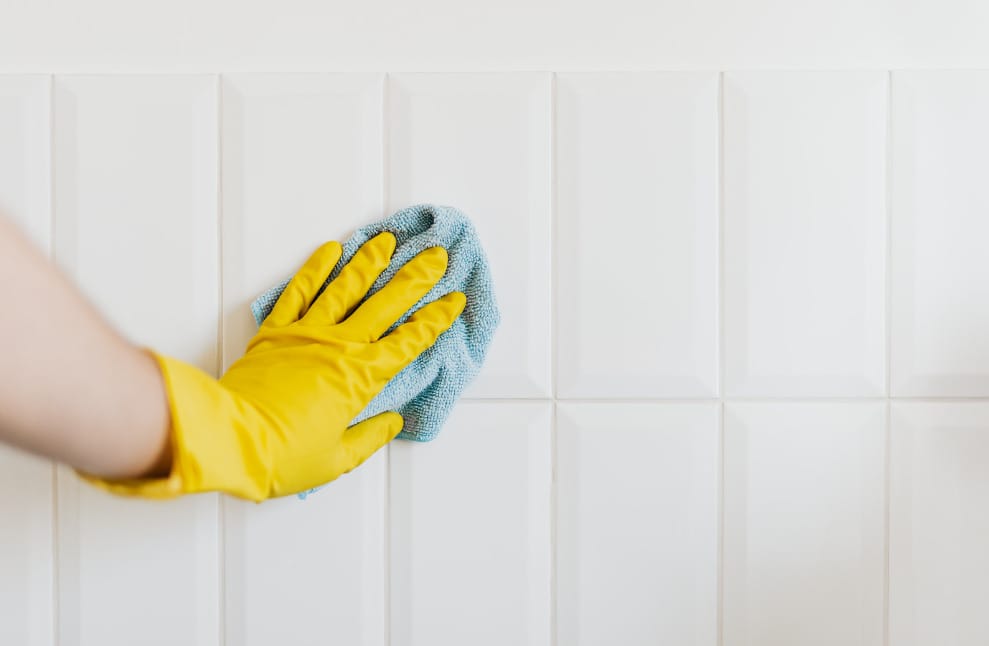
Before you start testing paint colors in your space, it's important to ensure that the surfaces are clean and free from dirt or grime. This will give you a more accurate representation of how the paint color will look.
Additionally, it's crucial to choose your fixed elements such as flooring, tile, and countertops before selecting a paint color, as these elements will impact how the color interacts in the space.
Once you have your samples ready, make sure to move the sample board around the room for interiors or around the house for exteriors to see how the color looks in different areas and lighting conditions.
Ensure the Surfaces in the Room Are Clean Before You Test Paint Colors
To properly prepare your space for testing paint colors, ensure that all surfaces in the room are clean and free of dirt or debris. Cleaning the surfaces will help you get an accurate representation of how the paint colors will look in your space.
Here are three reasons why cleaning the surfaces is important:
1. Eliminate color distortion: Dirt and debris on surfaces can make paint colors appear dull or dingy. By cleaning the surfaces, you can ensure that the colors will appear vibrant and true to their actual shade.
2. Avoid surprises: Sometimes, cleaning a surface can reveal a different color than what was initially chosen. By cleaning the surfaces beforehand, you can avoid any unexpected color changes and make a more informed decision.
3. Create a clean canvas: Testing paint colors on clean surfaces allows you to see the colors in their purest form. This will help you accurately assess how they'll interact with the other elements in the room.
Choose Your Fixed Elements Before Paint
To properly prepare your space for testing paint colors, start by choosing the fixed elements in the room.
Consider the flooring, tile, countertops, and any other permanent fixtures or finishes that will remain in the space. These elements will greatly influence how the paint color will look and interact with the room.

By choosing your fixed elements before painting, you can ensure that the color you select complements the existing elements in the space.
It's also important to keep in mind that paint stores offer a wide range of paint colors and finishes, so take advantage of their expertise and resources when making your selection.
Move Sample Board Around the Room for Interiors, and Around the House for Exteriors
Move the sample board around the room or house to get a better sense of how the paint color will look in different areas.
Here are three reasons why this is an important step in preparing your space for testing:
1. Evaluate Lighting: By moving the sample board to different areas of the room or house, you can see how the paint color interacts with natural light and artificial light sources.
This will help you determine if the color appears different in certain areas or at different times of the day.
2. Consider Surrounding Elements: Placing the sample board next to window treatments, furniture, and other fixed elements will allow you to see how the paint color complements or clashes with these elements.
It's important to ensure that the color harmonizes well with the existing design elements in the space.
3. Test Different Walls: Moving the sample board around the room will help you see how the color looks on different walls. Some walls may receive more light or have different textures, which can affect how the color appears.
By testing the color on multiple walls, you can ensure that it looks right from every angle in the room.
Testing Paint Samples
When it comes to testing paint samples, you have several options to choose from.
One effective approach is to surround the samples with white and place them in the same way they'll exist in the room.
Additionally, make sure to always use two coats of paint for proper saturation.

Test the samples on multiple walls to observe different lighting effects.
Consider painting a large area to get a better sense of how the color will look in your space.
Options for Testing Paint Colors in Your Home
Testing paint samples is an essential step in finding the perfect color for your home.
Here are three options for testing paint colors in your home:
1. Use paint chips: Paint stores offer small paint chips that you can take home to test the colors. While these chips can give you a general idea, they may not accurately represent how the color will look on your walls.
2. Purchase sample jars: Many paint brands offer sample jars of paint that you can apply directly to your walls. This allows you to see the color in its true form and observe how it looks in different lighting conditions.
3. Try peel-and-stick samples: Companies like Samplize offer peel-and-stick paint samples that you can apply to your walls. These samples are convenient and mess-free, allowing you to easily move them around the room and see how they look in different areas.
By testing paint samples, you can make an informed decision about the color that will best suit your home.
Do not forget that it is important to surround the samples with white and place them in the same way they'll exist in the room.
Surround Samples with White and Place the Same Way It Will Exist in the Room
To accurately test paint samples, follow these steps:
1. Surround the samples with white: This eliminates distractions from the current wall color and allows the true color of the paint to stand out. By doing this, you can better see the undertones and accurately judge how the color will look in your space.
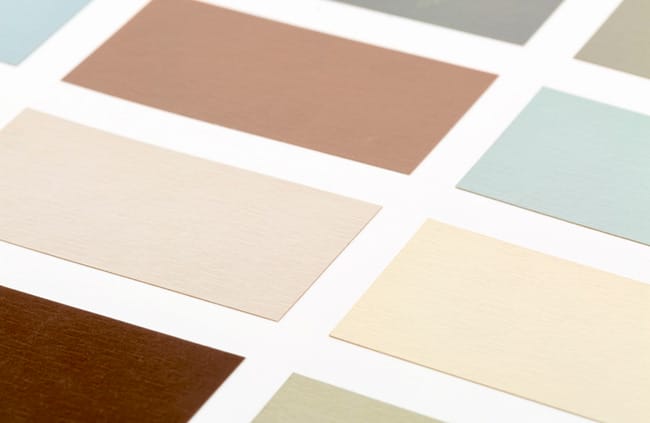
2. Place the samples in the same way they'll exist in the room: Position them vertically on the wall and move them around to different areas of the room. This will help you see how the color interacts with different lighting conditions and how it complements other elements in the space.
Always Use 2 Coats of Paint
In addition to the aforementioned, always use two coats of paint.
Here are three reasons why using two coats of paint is important when testing paint samples:
1. Proper saturation: Applying two coats of paint ensures that the color is fully saturated on the surface, giving you a more accurate representation of how it will look on your walls.
2. Consistency: Using two coats of paint allows for consistency in color throughout the room. Different walls may have variations in texture or absorbency, and applying two coats helps to minimize these differences.
3. Color accuracy: Applying two coats of paint helps to eliminate the influence of the previous wall color, allowing you to see the true color of the paint sample.
This is especially important if you're testing bold or vibrant colors.
Test on Multiple Walls
Try painting your paint samples on multiple walls in your space to see how the colors look in different areas.
Testing paint colors on multiple walls allows you to observe how the lighting and other elements in your space can affect the appearance of the colors.
By placing the paint samples on different walls, you can see how the colors interact with different angles of natural light throughout the day.
This will give you a better understanding of how the colors will look in various areas of your room.
Furthermore, testing on multiple walls helps you ensure that the color you choose complements the fixed elements in your space, such as furniture and flooring.
So, don't limit yourself to just one wall when testing paint samples, explore multiple walls to make an informed decision.
Paint a Large Area
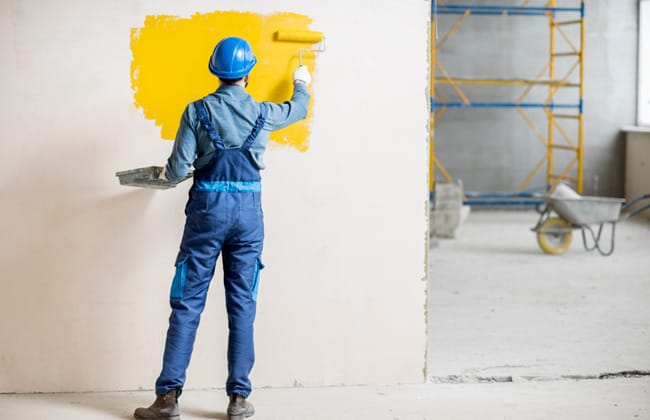
Painting a large area with your selected paint samples is beneficial for several reasons:
Firstly, it allows you to see the colors on a larger scale, giving you a more accurate representation of how they'll appear on your walls.
This increased visibility is important because it lets you see the true color and undertones of the paint, as opposed to relying on small sample swatches or paint chips.
Secondly, painting a large area allows for better comparison between different paint samples.
By seeing them side by side, it's easier to decide on which color you prefer.
Lastly, painting a large area gives you a more realistic representation of how the color will look in your space.
Factors such as lighting and the surrounding decor can greatly impact how a color appears, so seeing it on a larger scale helps take these factors into account.
By using this method, you can make a more informed decision when selecting a paint color for your walls.
Alternative (and Easier Way to Get) Paint Samples
You can easily obtain paint samples more conveniently and effortlessly.
Instead of buying brushes and paint to test on your walls, consider using peel-and-stick paint samples.
Companies like SAMPLIZE offer 12×12 peel-and-stick paint samples that can be ordered online and delivered straight to your door.
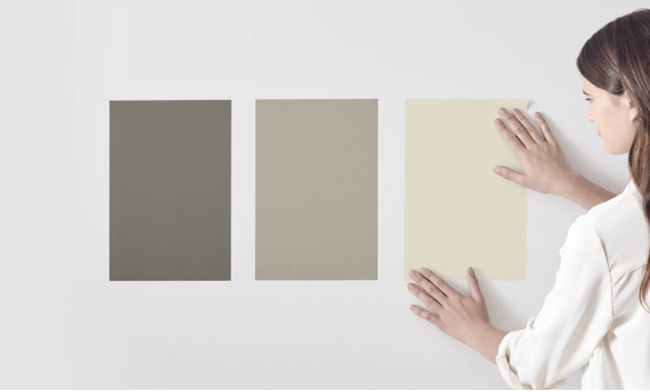
This alternative method eliminates the need for brushes and paint, saving you time and money.
It is also more environmentally friendly since you won't be wasting any paint.
With peel-and-stick samples, you can easily stick them on your walls to see how the colors look in your space without the hassle of painting.
It is a convenient and affordable option for testing paint samples and finding the perfect color for your home.
Test Paint Samples Without Painting the Wall
To test paint samples without painting the wall, continue your color exploration by utilizing alternative methods.
Here are three effective ways to test paint samples without actually painting the wall:
1. Paint Sample Boards: As we said earlier, purchase or create sample boards and paint them with the desired colors. This allows you to see the exact color on a larger surface and observe how it looks in different lighting conditions.
You can also move the boards around the room to see how they interact with different elements.
2. Tape Color Swatches: Use multiple paint sample cards or request larger swatches from the paint store. Tape them to the walls and observe how the colors look under different lighting conditions.
You can keep them up for several days to get a better understanding of how the colors will appear in your space.
3. Digital Visualization: Take advantage of technology by selecting colors and emailing photos of your home to a painting company.
They can create digitally painted pictures of your home with the new colors, allowing you to see how they'll look without actually painting the walls.
Observe the Paint Samples Throughout the Day

Throughout the day, observe how the paint samples change in different lighting conditions.
Natural light is crucial for testing undertones, as it will accurately show how the color will look with artificial light.
Take the time to observe the paint samples at different times of the day, such as morning, noon, and evening.
Lighting variations throughout the day can make a color look different, so it is important to consider these changes before finalizing your decision.
Pay attention to how the paint samples look under artificial light sources as well, as different types of light can affect how a color appears.
By observing the paint samples throughout the day, you can ensure that you choose a color that looks great in any lighting condition.
Now, let's discuss some common paint sampling mistakes to avoid.
Common Paint Sampling Mistakes to Avoid
One common mistake to avoid when sampling paint colors is relying solely on pictures or descriptions to choose a color.
It is easy to be swayed by the way a color looks on a screen or in a magazine, but the reality is that paint colors can appear different in person.
Here are three common paint sampling mistakes to avoid:
1. Not testing the paint sample on the actual wall: Painting a small section of the wall allows you to see how the color interacts with the lighting and other elements in the room.
2. Only testing one coat of paint: Applying two coats of paint gives you a more accurate representation of the color's true shade and saturation.
3. Failing to consider flooring or carpet color: The color of your flooring can greatly impact how a paint color looks in the room, so it's important to consider it when testing paint samples.
Considerations and Final Thoughts
When testing paint sample colors on walls, consider the impact it will have on your space and the potential for mistakes.
Trusting professional painters can alleviate the stress and uncertainty of choosing the right color.
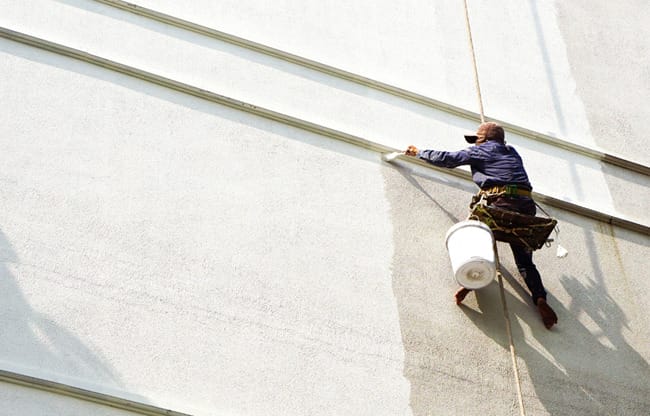
Should You Test Paint Sample Colors on Walls?
To determine if a paint color is the right choice for your walls, it's essential to test sample colors directly on the walls themselves.
Here are three reasons why testing paint sample colors on walls is important:
1. Accurate Representation: Paint swatches and sample pots can give you a general idea of how a color will look, but they may not accurately represent the final result on your walls.
By testing the paint directly on your walls, you can see the true color and how it interacts with the lighting and other elements in the room.
2. Comparing Colors: Testing multiple paint sample colors side by side on your walls allows you to compare them directly.
This way, you can see how each color looks in your space and how it complements other elements like furniture or flooring.
3. Final Decision: Testing paint sample colors on walls gives you the confidence to make a final decision.
It allows you to see the colors in different lighting conditions and over time, ensuring that you choose the right color for your walls.
Trust Your Home to Professional Painters
You can trust professional painters to provide expert guidance and ensure a successful paint job for your home.
When it comes to testing paint colors without painting the wall, professional painters have the knowledge and experience to help you make the right choice.
They can offer recommendations based on your preferences and the specific needs of your space.
Additionally, professional painters often have access to a wide range of paint colors and finishes that may not be available at your local paint store.
They can also provide digital painting services, consultations, and even sample board paints to help you visualize the final result.
Testing Paint Samples the Right Way
Now, let's delve into some final considerations and thoughts on testing paint samples the right way, so you can confidently choose the perfect color for your space.

As you continue to trust professional painters for expert guidance, it's important to regularly observe the paint samples throughout the day.
Here are some key things to keep in mind:
1. Lighting is crucial: Observe the paint samples at different times of the day to see how the color looks under various lighting conditions. Natural light is especially important for testing undertones.
2. Placement is key: Move the paint samples around the room and place them next to furniture, window treatments, and other elements to see how the color complements the space.
3. Take your time: Allow sufficient time to make a decision. Test the paint samples at different times of the day to see how the color changes in different lighting conditions.
Rushing the decision may result in choosing the wrong color.
With these considerations in mind, let's move on to some tips to test paint samples effectively.
Tips to Test Paint Samples
When testing paint samples, consider the following tips and final thoughts to ensure you make the right color choice for your space.
• Use stick paint samples or poster boards for testing: Stick paint samples are adhesive-backed and can be easily placed on the wall, allowing you to see the exact color without painting the entire wall.
Poster boards, on the other hand, provide a larger surface area to observe the color and its undertones accurately.
• Test the paint samples in different lighting conditions: Natural daylight is crucial for testing undertones, but also observe the samples under artificial light sources to see how the color looks.
Frequently Asked Questions
Can I Rely on Store Paint Chips or Social Media Pictures to Choose a Paint Color Without Testing It?
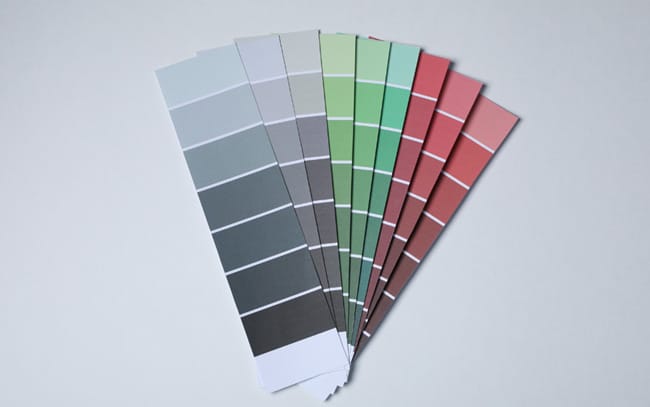
No, relying on store paint chips or social media pictures alone is not enough. Testing paint samples in your home is the only way to truly know how a color will look in your space.
Is It Necessary to Test Paint Samples on Multiple Walls and at Different Times of the Day?
Yes, it is necessary to test paint samples on multiple walls and at different times of the day. This ensures you see how the color looks in various lighting conditions and how it interacts with different areas of the room.
What Is the Advantage of Using a Primer for Saturated or Bright Colors When Testing Paint Samples?
Using a primer for saturated or bright colors when testing paint samples is advantageous because it helps achieve proper color saturation and enhances the vibrancy of the paint.
It ensures an accurate representation of the color and prevents any underlying colors from affecting the final result.
Are There Any Alternatives to Painting Sample Boards or Walls When Testing Paint Colors?
Yes, there are alternatives to painting sample boards or walls when testing paint colors.
You can use adhesive-backed paint sample boards, tape color swatches on walls, or even digitally paint your home to visualize the colors.
How Can Testing Paint Samples Help Me Avoid the Disappointment of Choosing the Wrong Color?
Testing paint samples allows you to see how colors interact with your space, avoiding the disappointment of choosing the wrong one.
It helps you make informed decisions and ensures the perfect color for your home.
Conclusion
So, there you have it.
With these innovative techniques and tips, you can bid farewell to the dreaded paint color guessing game.
No more wasted paint, no more disappointment. By utilizing sample boards, tape color swatches, and digital painting, you can confidently choose the perfect paint shade for your home.
Remember to observe the samples in different lighting and avoid common mistakes.
Embrace the power of testing and say hello to a beautifully painted space that truly represents you.
